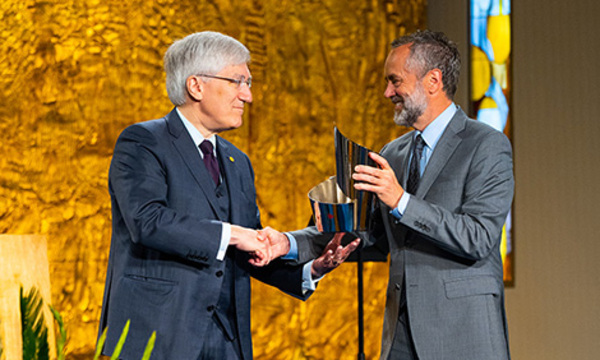, by Michael Horton (ŌĆÖ87), Zondervan, January 2011; This book is written for a growing cast of pilgrims making their way together and will be especially welcomed by professors, pastors, students and armchair theologians. Features of this volume include: 1) a brief synopsis of biblical passages that inform a particular doctrine; 2) surveys of past and current theologies with contemporary emphasis on exegetical, philosophical, practical and theological questions; 3) substantial interaction with various Christian movements within the Protestant, Catholic and Orthodoxy traditions, as well as the hermeneutical issues raised by postmodernity; and 4) charts, sidebars, questions for discussion and an extensive bibliography, divided into different entry levels and topics.
, by Hugh (ŌĆÖ91) and Cindi McMenamin (ŌĆÖ83), Harvest House, December 2010; Are the demands of everyday life constantly pulling you and your spouse in different directions? Do lifeŌĆÖs obligations and distractions make it a challenge to find quality time alone? If youŌĆÖve longed to rekindle the intimacy and companionship that first brought you together, join Hugh and Cindi McMenamin as they share 31 days of simple, creative and fun ways you can draw closer together again.
, by Scott Rae (chair and professor of philosophy of religion and ethics) and Kenman L. Wong (ŌĆÖ86), IVP Academic, March 2011; Is business just a way to make money? Or can the marketplace be a venue for service to others? Rae and Wong seek to explore this and other critical business issues from a uniquely Christian perspective, offering up a vision for work and service that is theologically grounded and practically oriented.
, by Arlene (Kho, ŌĆÖ92) Pellicane, Harvest House, January 2011; If 40 is the new 30 and 50 is the new 40, how is the average woman supposed to keep up? ThereŌĆÖs got to be an easier way to look younger than Botox treatments, yo-yo dieting or plastic surgery. Pellicane offers readers a less troublesome (and less expensive!) solution to looking younger and feeling younger in just 31 days. Women of all ages will benefit from ArleneŌĆÖs beauty and health tips, along with her biblical encouragement to ŌĆ£grow more beautiful from the inside out.ŌĆØ
, co-authored by Matt Jenson (assistant professor, Torrey Honors Institute), T & T Clark International, October 2010; This book offers a rigorous, comprehensive introduction to the doctrine of the church by taking the tack of walking readers through the internal logic of ecclesiology. Rather than simply offering a compendium of perspectives on each issue that arises, the authors seek to teach and model thinking theologically, with the grain of Scripture and ecclesial reflection, about the church.
, by Tim Muehlhoff (associate professor of communication), IVP Books, November 2010; Marriages are as variable as the weather, and every marriage has a climate. Some are chilly and lack intimacy. Others are stormy and filled with conflict. But while the weather outdoors is beyond our control, the communication climates within our homes can be changed ŌĆö for the better. In Marriage Forecasting, communication specialist Tim Muehlhoff provides practical ways for couples to rebuild a warm relational climate.
, by Jason Cusick (M.A. ŌĆÖ00), Wesleyan Publishing House, December 2010; Love. The word is used so many ways that it has virtually lost any meaning. Many people are skeptical that there is such a thing as true, lasting love. But what if weŌĆÖve simply forgotten an ancient, time-tested approach for making love last? Or worse, what if weŌĆÖve set it aside as somehow not worth the effort? In this book, Cusick reveals three ancient principles for building a loving relationship that lasts ŌĆö whether youŌĆÖre dating, engaged, newly married, rebuilding or starting over again.
, co-authored by Allen L. Yeh (assistant professor of history and theology), Zondervan, October 2010; Routes and Radishes invites you into a conversation about what the evangelical movement has been and what it is going to be. Five influential, younger-generation evangelicals discuss their passions for shaping the evangelicalism of the future. They encourage you to consider the challenges and opportunities that face rising leaders within diverse evangelical communities.
 51┬▄└“
51┬▄└“.jpg)

